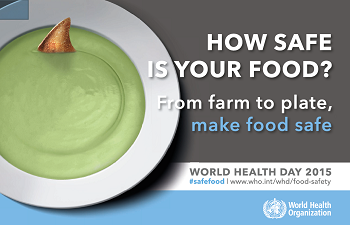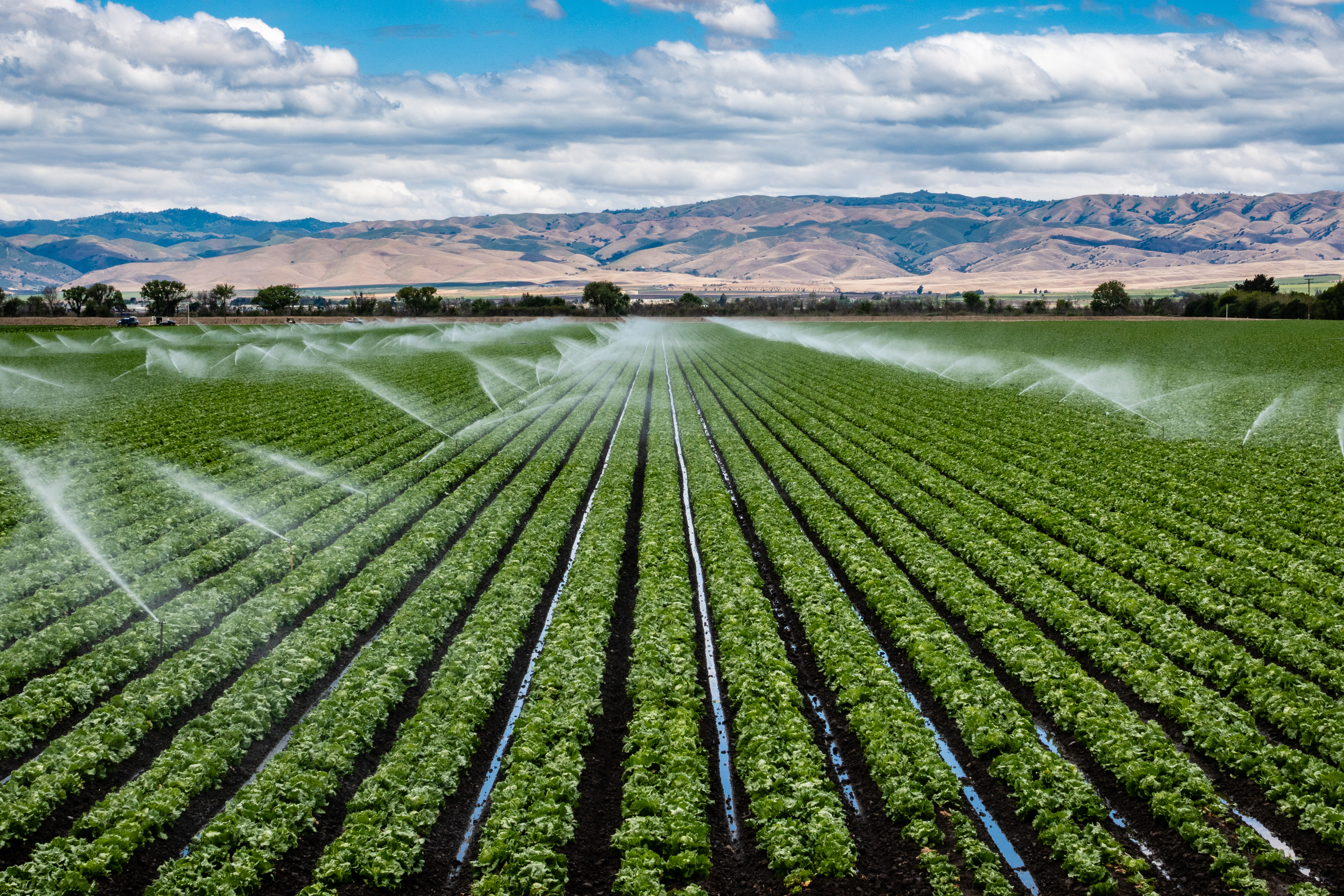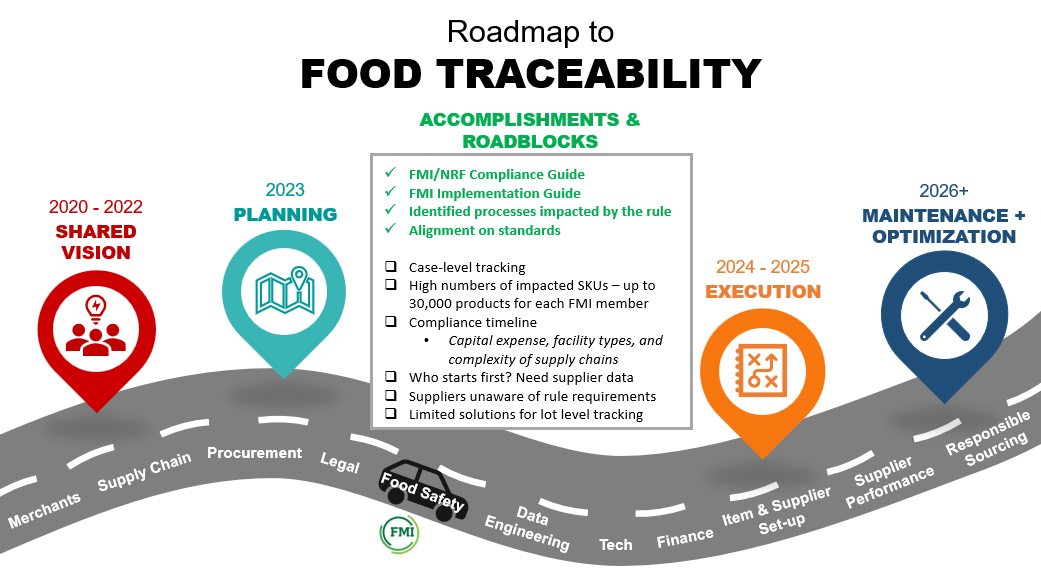By: Hilary Thesmar, PhD, RD, FMI Vice President, Food Safety Programs, Food Marketing Institute

April 7, 2015 is World Health Day and this year’s theme is food safety. Each year, a global public health issue is selected as the theme to celebrate the founding of the WHO in 1950 and to continue to draw attention to global health. In my opinion, food safety is an excellent choice!
Just in the US, approximately one in six people get sick annually from eating contaminated food, according to the CDC. Many of these illnesses can be prevented, but with a global food supply chain that continues to become more complex, strong prevention plans become more and more challenging. Many parties are involved in getting a product from farm-to-plate and can include: growers and producers, processors, distributors, transporters, wholesalers, retailers, and consumers. In some cases, a product may “visit” a step multiple times before it reaches its “final destination.” Everyone in the food industry is responsible for food safety. Despite the length or time of a supply chain, it is imperative that each party implement preventative measures to reduce the likelihood of contamination.
From 1998-2008, produce accounted for the majority of domestically-acquired foodborne illnesses so let’s explore how a typical produce item gets from farm-to-plate and look at some of the preventative measures that are taken at each step along the way.
On the Farm: On the farm, the source of contamination typically comes from one of the “four Ws”: water, wildlife, waste and workers; therefore, prevention primarily focus on these four areas.
- Good Agricultural Practices (GAPs) and Good Handling Practices (GHPs) are best practices designed to ensure that our produce items are grown, packed, handled, and stored in the safest manner in order to minimize the opportunity for contamination. Often, food retailers work with growers to ensure that these systems are in place. FMI members have developed a Produce Safety Best Practice Guide to assist produce growers to develop or strengthen on-farm food safety programs.
Processing and Distribution: One of the many challenges of the supply chain is the volume of product and the variety of product produced. Often processors and distributers have the responsibility to ensure that preventive programs are in place and are appropriate for each product.
- Food retailers implement supplier verification programs to ensure that certain expectations and criteria are met. For example, food retailers may require produce suppliers in both distribution and on the farm obtain a GFSI recognized audit, such as an audit by the Safe Quality Food Institute (SQF). It is up to the processor and/or distributer that all buyer specifications have been met. Maintaining the safety of food relies heavily on the sharing of information and the two-way communication between supply chain partners. Companies rely on systems such as ReposiTrak® to manage the regulatory, financial and brand risk associated with issues of food safety in the food supply chain.
At Retail Food Establishments: At the point of sale, in retail food establishments, regulatory requirements, which must be met, are set by local and state agencies.
- In the store, employees play a critical role in minimizing the risk of microbial contamination. Food retail employees are on the front line of food safety and are the eyes of day-to-day operations. Food retail employees ensure product is stored and handled appropriately as well as maintain overall store cleanliness. Employees gain this critical food safety knowledge through comprehensive food safety training programs. Some employees may receive more general food safety training through a program such as SafeMark™ where as others may receive more specific food safety training as it relates to their specific job function. The Produce Safety Best Practice Guide also has recommendations for safely handling produce at food retail.
In the Home: Although companies have the responsibility to ensure the food they sell is safe, consumers also play a role when it comes to food safety. A significant number of foodborne illnesses occur in the home. These illnesses are often caused by improper handwashing, storage or cross contamination. When it comes to food safety in the home, there are four simple steps consumers can take: clean, separate, cook and chill.
- The Partnership for Food Safety Education offers a variety of resources to assist consumers with food safety and these four steps including specific information on produce safety.
- The FoodKeeper app is another resource available to help answer consumers’ questions about the shelf life of products to avoid prematurely discarding food. For example, the FoodKeeper recommends that tomatoes can be stored in the pantry up to 7 days when ripe, in the refrigerator 2-7 if refrigerated, and in the freezer, up to 2 months.
As evidenced by our travels through the supply chain, each partner has preventative measures that must be simultaneously implemented. Failure to do so, results in an increased vulnerability to the remaining supply chain steps. Ultimately, the foundation of producing safe food is the commitment, by all parties, to make food safety their number one priority whether local or global.


 Industry Topics address your specific area of expertise with resources, reports, events and more.
Industry Topics address your specific area of expertise with resources, reports, events and more.
 Our Research covers consumer behavior and retail operation benchmarks so you can make informed business decisions.
Our Research covers consumer behavior and retail operation benchmarks so you can make informed business decisions.
 Events and Education including online and in-person help you advance your food retail career.
Events and Education including online and in-person help you advance your food retail career.
 Food Safety training, resources and guidance that help you create a company food safety culture.
Food Safety training, resources and guidance that help you create a company food safety culture.
 Government Affairs work — federal and state — on the latest food industry policy, regulatory and legislative issues.
Government Affairs work — federal and state — on the latest food industry policy, regulatory and legislative issues.
 Get Involved. From industry awards to newsletters and committees, these resources help you take advantage of your membership.
Get Involved. From industry awards to newsletters and committees, these resources help you take advantage of your membership.
 Best practices, guidance documents, infographics, signage and more for the food industry on the COVID-19 pandemic.
Best practices, guidance documents, infographics, signage and more for the food industry on the COVID-19 pandemic.
